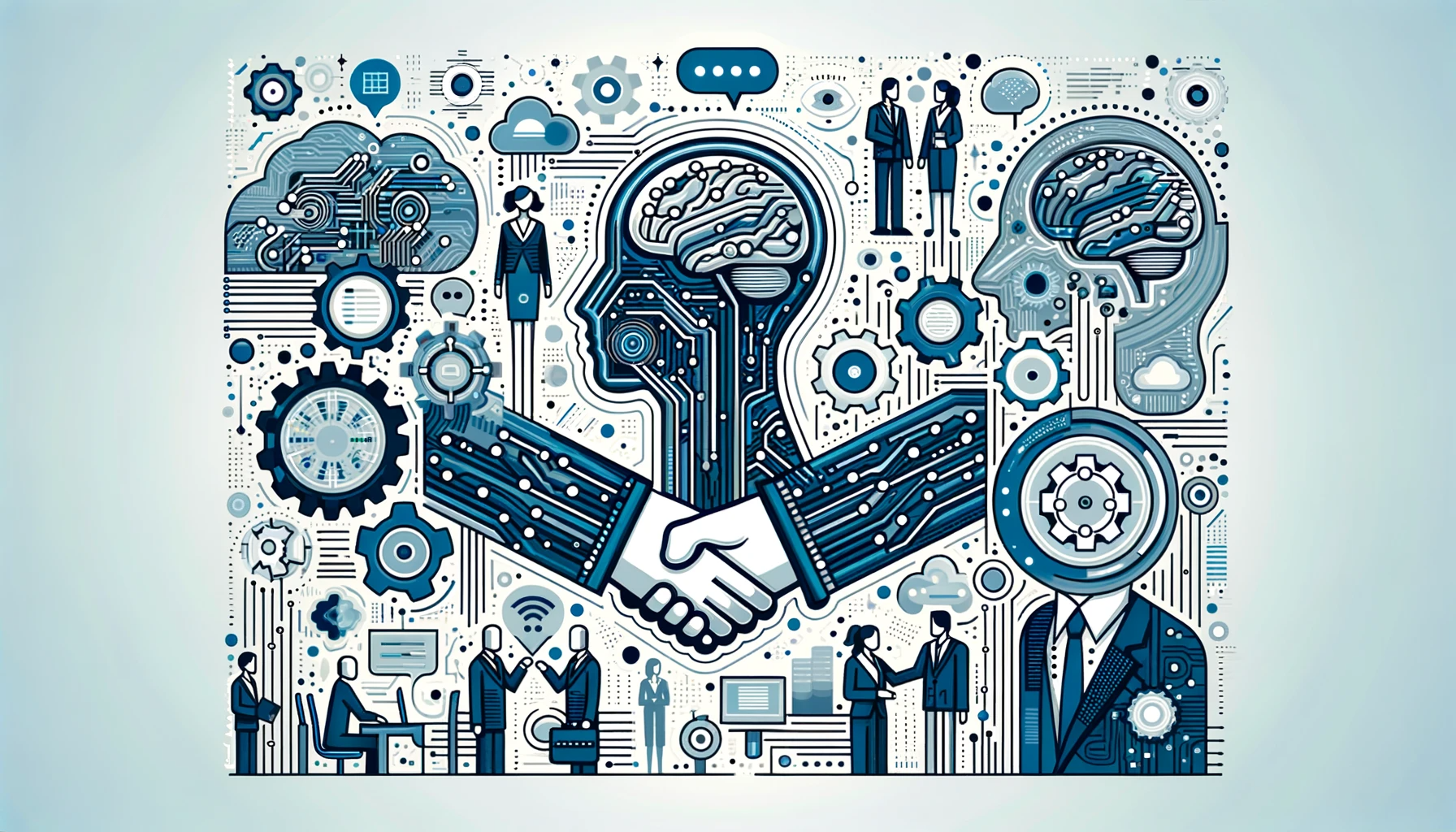We're part of the Varolio Inc. family.
©Varolio 2026. All rights reserved.
We're part of the Varolio Inc. family.
©Varolio 2026. All rights reserved.
How to unlock the full potential of AI in the workplace? Adopting the best practices for human-AI collaboration includes fostering a culture of lifelong learning, utilizing supportive tools for easy integration and more. Come learn how to correctly integrate AI into your company.



The rapid advancement of artificial intelligence (AI) has generated a massive buzz and excitement across various industries. AI-driven technologies are revolutionizing the way organizations operate, from automating mundane tasks to enhancing decision-making processes. However, the integration of AI in the workplace has also raised questions about the human-AI collaboration and the potential consequences for employees. Let's explore the best practices to ensure a harmonious coexistence between humans and AI, enabling organizations to reap the full benefits of these innovative technologies.
One of the most effective ways to facilitate human-AI collaboration is by fostering a culture of continuous learning within the organization. As AI technologies evolve, employees must develop new skills and competencies to remain competitive and adapt to the changing workplace dynamics. Providing employees with regular training and development opportunities, as well as access to relevant resources and learning platforms, can help bridge the knowledge gap and empower them to work effectively alongside AI tools.
AI systems excel at tasks that involve data analysis, pattern recognition, and automation, while humans possess unique abilities such as creativity, empathy, and critical thinking. By emphasizing the complementary nature of human and AI skills, organizations can harness the strengths of both to optimize productivity and innovation. Encourage employees to focus on tasks where they can add the most value and leverage AI systems to handle repetitive, time-consuming tasks.
Effective communication is critical to ensuring a successful human-AI collaboration. Organizations must establish clear channels for employees to provide feedback, voice concerns, and ask questions about AI integration. Open communication will help address any misconceptions or fears surrounding AI and create an environment where employees feel comfortable embracing new technologies. Regular updates and transparent communication about AI initiatives can also foster trust and confidence in the organization's vision and direction.
As AI becomes an integral part of the workplace, organizations must prioritize ethical AI practices to ensure that AI systems are developed and deployed responsibly. Develop guidelines that address concerns such as data privacy, security, and algorithmic fairness. By adhering to ethical AI principles, organizations can prevent potential negative consequences and build trust among employees, customers, and stakeholders.
Fostering a collaborative work environment can help employees embrace AI technologies more readily. Encourage cross-functional teams to work together on AI-related projects, share insights, and learn from one another. This collaborative approach will enable employees to better understand the capabilities and limitations of AI tools and develop strategies for leveraging AI to enhance their work.
To ensure that AI systems are functioning optimally and delivering the desired outcomes, organizations must implement ongoing performance monitoring and evaluation. Regular assessments will help identify areas where AI tools can be improved or adjusted to better align with business objectives and employee needs. By monitoring and evaluating AI performance, organizations can make data-driven decisions to optimize human-AI collaboration and drive success.
Embracing AI technologies requires employees to demonstrate adaptability and resilience in the face of change. Recognizing and rewarding these qualities can help incentivize employees to adopt AI tools and contribute to a positive workplace culture. Offer incentives, promotions, or other forms of recognition for employees who proactively engage with AI technologies and demonstrate a willingness to learn and adapt.
To ensure a smooth transition and efficient collaboration between humans and AI, it is recommended to consider tools that support the integration of AI into the organization's processes. These tools can help bridge the gap between AI capabilities and employees' needs, offering user-friendly interfaces, integration with existing systems, and customizable workflows. By taking advantage of these supportive tools, organizations can enhance their employees' ability to leverage AI in their daily tasks, making the adoption process more manageable and less intimidating. With the right tools in place, businesses can unlock the full potential of AI-driven technologies and maximize the benefits they offer.
The integration of AI in the workplace offers numerous opportunities for organizations to enhance productivity, efficiency, and innovation. By implementing best practices for human-AI collaboration and utilizing supportive tools, organizations can create a harmonious coexistence that allows employees and AI systems to work together effectively. Cultivating a culture of lifelong learning, fostering teamwork, and emphasizing the complementary nature of human and AI skills will ensure that both employees and AI technologies can thrive in the evolving workplace landscape. Embrace the power of AI and prepare your organization for a future where humans and AI systems collaborate seamlessly to achieve shared goals.